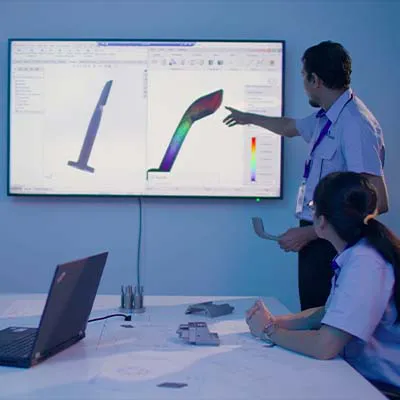Resilient ecosystem
While many countries have struggled to navigate the challenges and disruptions brought about by the global uncertainties, Singapore has emerged as a beacon of stability amidst the chaos.
By prioritising R&D, forging new partnerships, and moving up the value chain, Singapore has successfully positioned itself as a strategic hub for global semiconductor firms. Its integrated ecosystem, which spans manufacturing, assembly, testing, and packaging, makes it an attractive hub for global firms.
A key driver of this success is the Singapore government’s commitment of S$18 billion from 2021 to 2025, aimed at advancing research, development, and innovation within the semiconductor industry.
This funding is allocated for R&D grants, infrastructure upgrades, and tax incentives designed to reduce operational costs and foster growth. Singapore continues to play a critical role in meeting the growing demands of an interconnected world, establishing itself as a global hub for advanced semiconductor manufacturing.
Furthermore, the Singapore government has also launched various initiatives aimed at driving collaboration between government agencies, multinational corporations, startups, and academic institutions.
Programmes such as specialised training and internships are addressing talent shortages and equipping the local workforce with advanced semiconductor skills. These efforts not only close immediate gaps but also build a sustainable talent pipeline, ensuring long-term growth.
Through these initiatives, Singapore is establishing a resilient semiconductor ecosystem that mitigates supply chain risks and strengthens its global competitiveness.
Current landscape and future directions
As geopolitical tensions continue to shape global markets, countries must adapt their strategies to ensure resilience in their semiconductor sectors. For Singapore, this means doubling down on its strengths while fostering collaboration with regional partners like Malaysia and Vietnam to create a more integrated and secure supply chain.
Through initiatives like industrial parks along the Malaysia-Singapore border, and those under VSIP (Vietnam-Singapore Industrial Park), as well as attracting high-tech investments and streamlining semiconductor processes, Singapore strengthens its role in building a resilient and secure regional supply chain. Aligning efforts with neighbouring countries helps Singapore mitigate risks and diversify its sources of production and expertise.
Looking ahead, Singapore should focus on expanding its talent pipeline through educational initiatives that emphasise STEM fields and vocational training tailored to industry needs. This will ensure a skilled workforce ready to meet future demands.
These initiatives can help build a skilled workforce capable of meeting future demands while driving innovation in emerging areas. For instance, the Singapore Semiconductor Industry Association (SSIA) collaborates with educational institutions to tailor academic curricula to the semiconductor sector’s needs, offering training and conversion programmes to reskill professionals and address talent gaps.
In addition to talent development, continued investment in infrastructure is crucial. Expanding industrial land for wafer fabs and other semiconductor manufacturing facilities will provide the space needed for sector growth.
Furthermore, it will be important to ensure that these expansions align with global sustainability trends. Singapore’s industrial planner, JTC, is preparing 11 per cent more land in wafer fabrication parks to attract semiconductor giants capitalising on AI advancements. These strategic efforts position Singapore as a key player in the rapidly evolving global semiconductor landscape.
As Singapore navigates the challenges facing the semiconductor industry, it has transformed adversity into opportunity, reinforcing its position as a regional leader. While disruptions such as the lingering effects of the pandemic, rising geopolitical tensions, and supply chain shifts have tested the industry, Singapore’s forward-thinking approach, supported by strategic partnerships and government initiatives, has strengthened its competitive edge.
The ongoing commitment to innovation, talent development, and sustainability ensures that Singapore remains a leading player in the global semiconductor landscape.
Through resilience and adaptability, Singapore continues to thrive amidst these challenges, positioning itself to lead in the industry and drive long-term growth and innovation. Ultimately, every cloud has a silver lining – Singapore’s proactive approach amidst adversity is paving the way for a brighter future in this vital industry.







